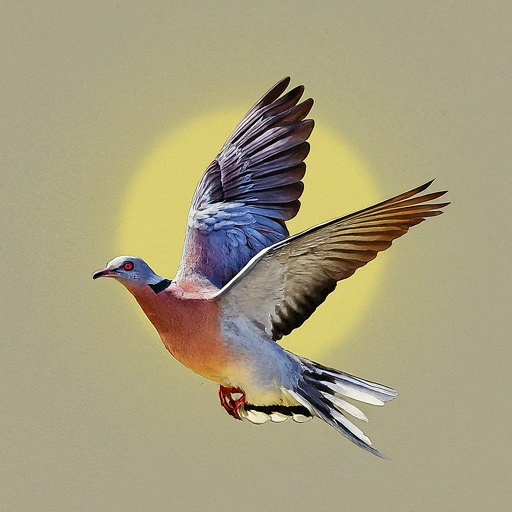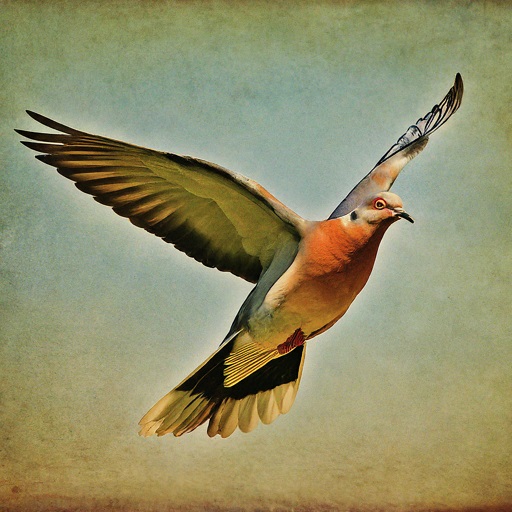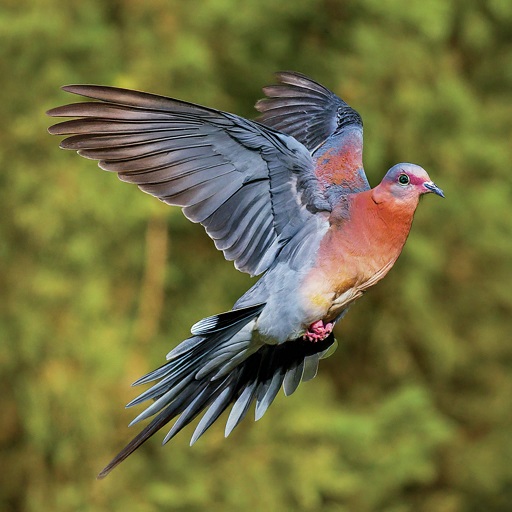How Many Passenger Pigeons Were There?
There was a time when the sky was once filled with an awe-inspiring spectacle: flocks of passenger pigeons stretching for miles, their wings darkening the sun as they passed overhead. Sadly, these magnificent birds, who used to be one of the most abundant species on earth, have faced tragic fate, especially due to human impact.
If you want to know ‘how many passenger pigeons were there,’ this article is for you. In this article, I will help you dive deeper into the fascinating history of the passenger pigeon and examine the method used to estimate their population. You will further explore the reason behind their decline and the efforts to understand & conserve these lost species. But before I tell you all these things, let’s begin with learning ‘how many passenger pigeons were there?’
How Many Passenger Pigeons Were There?

According to Research conducted by the University of Michigan, the passenger pigeon population was estimated to be 3 to 5 billion Birds during the peak of their existence. These large numbers were due to their extraordinary reproductive behavior & ability to form colossal flocks, ultimately providing safety in numbers against predators.
However, you should note that estimating the population of a species that existed over a century ago is challenging. And there is no exact data collection on the estimated passenger pigeon flocks during that time. However, if we talk about these passenger pigeons, they are considered unique birds native to North America.
If you look at the early records & historical accounts, you will find that these birds were astonishingly abundant, existing in vast numbers during the 19th century. Also, you should know that early ornithologists & naturalists struggled a lot to provide accurate figures due to the sheer vastness of passenger pigeon flocks and the limitation of data collection techniques in those times. Therefore, below, I mention the historical estimates & methods and modern techniques where we will apply science to the past to properly estimate the historical passenger pigeon population.
Historical Estimates & Methods
Historically, researchers often rely on various methods to estimate the passenger pigeon population. One of the most commonly used approaches tends to be counting the number of passenger pigeons in a passing flock & then extrapolating that number to estimate the total population. However, you should note that this method tends to be highly imprecise and often lead to significant overestimation. Also, I learned about a study conducted by Cornell Lab of Theology stating that the observer’s emotion often influenced early population estimates. As the flocks were so immense, the observer tended to exaggerate the number out of astonishment, which further led to inflated figures.
Modern Techniques: Applying Science to the Past
Now if we take a quick look at modern times, we will find scientists employing advanced techniques to estimate the historical population of many species, including passenger pigeons, more accurately. The scientist used the help of DNA analysis coupled with the study of historical accounts to shed some light on their genetic diversity and population dynamics in the past.
When I did my research, I encountered a well-known study conducted by the American ornithological society emphasizing that genetic analysis of museum specimens can provide valuable & crucial insights into the genetic diversity of passenger pigeons. Astonishingly, results were astonishing & revealed that despite their vast numbers, the passenger pigeon suffered from surprisingly low genetic diversity, making them more vulnerable to population crashes. This further leads to understanding the rapid decline of the passenger pigeon population.
The Rapid Decline: Unraveling the Causes
The prolific passenger pigeon population began to decline rapidly in the mid to late 19th century, leading to the eventual extinction in the early 20th century. Surprisingly, this kind of decline was multifaceted, with both human activity and ecological factors playing a significant role. Let’s look at both to understand the causes of passenger pigeon extinction better. However, we have also shared a dedicated article on this topic to check out Why the passenger pigeon went extinct. Returning to the point, let’s first look at the impact of human activity on the passenger pigeon population & extinction.
Impact of Human Activities
Human activities like deforestation and commercial hunting for meat play a crucial role in the passenger pigeon’s demise. You should note that the increasing demand for passenger pigeon meat for urban markets significantly leads to uncontrolled hunting. A report by the National Society reveals that passenger pigeon hunting became a lucrative business, leading to indiscriminate killing and further decimating their population.
Also, another study that was conducted by the national park service found that passenger pigeons were being slaughtered in massive numbers that once-thriving flocks were reduced to mere remnants within a few decades. After knowing the impact of human activity on the decline of passenger pigeons, let’s take a quick look at the ecological factors.
Ecological Factors: A Delicate Balance Upended
We can’t say human activities were the only culprit behind passenger pigeon extinction. Few ecological factors contributed to the decline of the passenger pigeon. Since the passenger pigeon’s primary diet usually consists of mast crops like acorns and beechnuts. Fluctuations in these crops impacted food availability, affecting their reproductive success.
While doing my research, I learned about a study by the University of Chicago suggesting that mast-crop failures were linked to irregular weather patterns and deforestation, which further created an ecological imbalance, leading to a sudden decline in the passenger pigeon population. If you wonder if passenger pigeons are extinct, the answer is yes. However, consider reading my article on this to know more about this topic.
The Unfortunate Extinction: Lessons Learned
I am a very passionate bird watcher & I remember my grandfather’s story about witnessing these majestic passenger pigeon flocks during his youth. You should know that the extinction of these magnificent birds not only impacted the ecological balance but also left a huge void in the cultural heritage of North America.
When it comes to knowing about the last known passenger pigeon Martha, who used to live in captivity at Cincinnati Zoo to breed her & save the species, passed away on September 1, 1914, marking the extinction of her kind. Also, you should know that the passenger pigeon’s tragic fate serves as a poignant reminder of the impact of human actions on wildlife. According to Research by the University of California, the extinction of passenger pigeons has fueled the early conservation movement, leading to the establishment of protected areas and conservation laws.
Efforts Toward Understanding & Restoration
Despite the tragedy of the passenger pigeon, many conservation efforts have been going on to bring back these spaces. We have also shared & in that article on passenger pigeon revival, where we have discussed how scientists are trying their best to return passenger pigeons to this world again. TMuchmodern genetic Research explores the possibility of extinction & bringing back lost species through cloning or genetic engineering.
You should know that the passenger pigeon revival project aims to restore the bird’s ecological role & rewild its habitat. The passenger pigeon legacy will remind us of our responsibility to conserve endangered species. We should also consider collaborative conservation efforts supported by data from organizations like the World Wildlife Fund, which are critical for protecting biodiversity and treatment for the future extinction of any other animal.
Conclusion
I hope you know all the answers to the question, ‘How many passenger pigeons were there.’ Undoubtedly, the passenger pigeon’s story is a tale of wonder & caution. This once abandoned species, with billions of individuals darkening the sky, suddenly vanished due to human activity and ecological imbalances. Today, as we reflect on these wonderful wonders, we are reminded of preserving our planet’s biodiversity.
Therefore I highly recommend you do your best to learn from the past and use authentic Research & data to ensure such tragedies do not occur in other species. If you have any other concerns or questions regarding the topic of ‘how many passenger pigeons were there,’ never mind commenting below. From a historical point of view and modern science, I have done my best to give you all the information you needed on the question of how many passenger pigeons were there.
If you find the article helpful, then consider sharing it. Your share will help many people learn about the possibility of de-extinction and how many passenger pigeons were there. Check my other helpful guide on passenger pigeon facts on this website. See you in the next post, till then, take care & goodbye.




